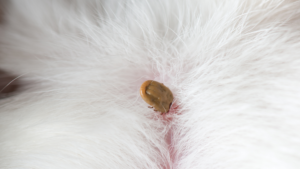What is an aural haematoma?
The word aural relates to the ear and a haematoma is an abnormal collection of blood, so an aural haematoma is a condition where blood collects within the pinna, which is the external part of the ear. It might also be referred to as a blood blister of the ear, cauliflower ear or a pinna haematoma. Although the exact mechanism by which it occurs is not completely understood, it often occurs in relation to an underlying cause.
A commonly associated condition is ear infection. When the ears become itchy, frequent head shaking and scratching can traumatise the vessels within the ear causing the haematoma. Other trauma, such as from rough play can also be associated with aural haematomas, as can underlying diseases affecting the strength of the blood vessels such as in Cushing’s disease, and certain cancers.
Who is affected?
Any breed can be affected by aural haematoma, but the condition is far more common in dogs than in cats.
According to PetSure data, in the 2020 calendar year, aural haematoma was most prevalent in the following breeds:
| Breed | Prevalence |
| Bernese Mountain Dog | 0.70% |
| Dalmatian | 0.36% |
| French Bulldog | 0.34% |
| Australian Cattle Dog | 0.34% |
| Dobermann | 0.33% |
| Bull Terrier | 0.32% |
| Rhodesian Ridgeback | 0.31% |
| Bull Arab | 0.28% |
| Great Dane | 0.24% |
| Staffordshire Bull Terrier | 0.22% |
Prevalence = Total number of unique claiming pets / total number of insured pets across 12-month period. Excludes breeds with less than 500 active pet insurance policies.
Signs of aural haematoma
Often one of the first sign noticed with an aural haematoma is a soft, pillow like swelling affecting the pinna of the ear. This may be associated with heat, pain, redness, scratching the ear(s) and shaking the head. The ear may be smelly or have a discharge. If the haematoma is very advanced, the pinna of the ear may be firm with scar tissue and have a cauliflower ear appearance.
Management of aural haematoma
Management of the aural haematoma itself usually involves draining the swelling. This may be done surgically, with several techniques employed by vets to open, drain and then close the ear to give the most aesthetically normal result as possible whilst also trying to prevent further haematoma development. There are also non-surgical techniques which may involve draining the ear with a needle and using medications to help reduce the swelling and inflammation. Treating any underlying causes, such as ear infections for example is an important part of preventing further trauma to the ear.
How much does it cost to treat?
According to PetSure claims data from 2020 (calendar year), the average, single treatment cost relating to aural haematoma was $430.00 with the highest, single treatment cost being $6,073.00.
Is aural haematoma covered by pet insurance?
Aural haematomas are generally covered by Comprehensive Accidental Injury and Illness pet insurance policies administered by PetSure (check our brand partners at petsure.gholab.com.au/partners), unless related to a pre-existing condition or exclusion. Refer to your policy documents and Product Disclosure Statement for more information.
References
- VINCYCLOPEDIA OF DISEASES, Aural haematoma, 28/03/2019, accessed on 08/07/2021
- Hewitt, J & Bajwa, J, 2020, Aural hematoma and its treatment: A review, The Canadian Veterinary Journal, accessed on 08/07/2021
Pet insurance can help by covering a portion of the eligible vet bill if the unexpected happens. Because it is difficult to predict the costs of veterinary care, it can help to have measures in place to help prepare for the unexpected. Check out our partner network and explore our policy tools to find a pet insurance policy.
Not all conditions or items are covered by Pet Insurance. Refer to the applicable Product Disclosure Statement for information about coverage and exclusions.








